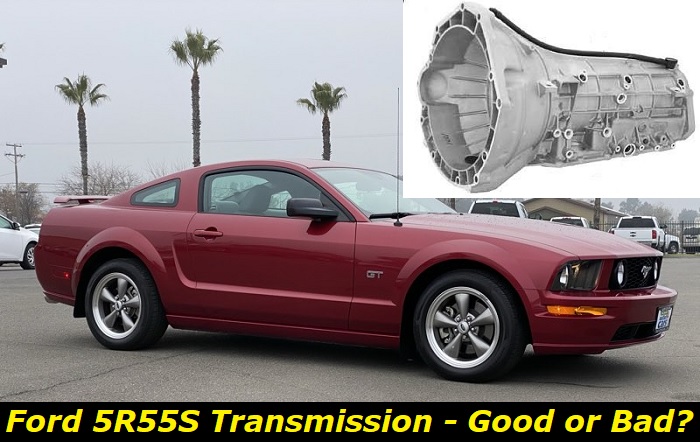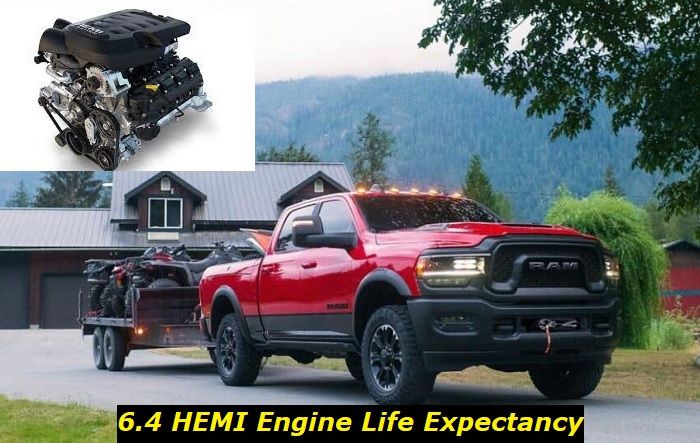In 2003, Ford Thunderbird switched from the 5R55N transmission to the newly introduced 5R55S, which came without an option of SelectShift. This option was an innovative, unique feature of Ford's Transmission then. Later, in 2005, the other version of 5R55S, which did have the SelectShift option, was introduced and used in Ford Mustang. For years, more than a few Ford models have run on 5R555S.
5R55S transmission highlights
- Average lifespan:150,000-170,000 miles
- Reliability Score:Medium
- Prone to minor issues:No
- Price for repair after failure:$1,100-$1,400
- Price for replacement:$2,900-$4,200
- Availability of parts:Average
- Common problems: Afraid of aggressive driving, pump issues, torque converter solenoids getting clogged, afraid of overheating.

5R55S Transmission Problems
Without the transmission in a car, the car cannot move. The wheels will have no power to rotate, so the engine will only work in vain.
To start with, your 5R55S Transmission works together with the gearbox. And, let's clear this confusion. No, the gearbox is not another name for transmission. The gearbox contains gear trains that serve as the reins for the engine. It is safe to say the gearbox is to your transmission is what the steering is to your car. Think of the sets of gears your car selects to regulate engine speed. What makes that possible? That's the gearbox for you.
What's Bad in the Ford/Mazda Gearbox?
Ford and Mazda are two automobile giants that shared engine designs and manufacturing techniques as part of their partnership between 1974 and 2015. Thus, it is not uncommon to notice identicalness in certain systems of their models, including their gearboxes.
Now the question is, what's bad in the Ford/Mazda gearbox?
The answer is yes, and no.
Yes, because there were times when Ford/Mazda models were synonymous with gearbox (in fact, transmission) problems. But that has changed since
No, because, generally speaking, there is nothing wrong with the gearboxes of Ford or Mazda models. With proper care, it can last between 150,000 and 200,000 miles. That's roughly 10 - 15 years.
Shifting Problem
5R55S transmission is primarily automatic, even though it has a version with SelectShift capability. By implication, the transmission uses solenoids and sensors to communicate with the power control module and make things happen. At least, that is how the shifting of gears is supposed to work. It should be smooth, with minimal human intervention.
However, these perfectly synchronized functions do fail at times. The possible aftermath of a failure is shifting problems. Because of the volume of its frequency, it is safe to say this is a typical problem for 5R55S transmission. And, you know what! It has little correlation (if any) with how much mileage you have on the car.
Difficulty shifting into gears manifests in different forms. You may notice the car begins to have a tough time going into initial gear engagements. This will most likely affect both forward and reverse engagements. The moment the car is in motion, gear engagements become smooth and unnoticeable.
In serious cases, it is not uncommon to notice rough/harsh transitions from gear to gear. The car jerks and struggles as it tries to engage gears. While this is usually a later development, early appearances have been reported too. You may also experience bind-up on shifts, which some call 'shift lock.'
Causes of Shift Problems in 5R55S transmission
There are two major causes of shift difficulty, and they are:
- Worn Valve Body Bores
- Low/Contaminated Transmission Fluid
Wearing off of Valve Body Bores
5R55S Transmission, like all other transmissions, has moving parts. There is the valve body, an aluminum casting. There is also the servo rod made of hard steel. Now, come to think of it. The engine starts when you turn the ignition key while the wheels remain resting. But that changes as soon as you engage the drive gear. The transmission comes into life and takes over the wheels. One of the major components of the transmission is the servo.
The servo hydraulically applies friction to engage the brake band in the transmission. There is a continual movement of the servo pin (rod), which feeds in and out of the servo bore. Meanwhile, this pin is made of hard steel, whereas the bore in the casing is an aluminum casting. The interaction between them is so persistent that one has to give in before long. The bore, being aluminum, is always the victim here.
Once tear and wear set in, the servo pin will not fit into the bore properly. It means the servo bore will be left unblocked intermittently. Then, the servo starts to leak and therefore loses pressure. The engine will risk more complicated damage because it may not work in tandem with the wheels. But in the meantime, the vehicle may present shifting problems.
The good news is that problems emanating from the valve body bores and the O-rings on the solenoid assembly are easy to troubleshoot and fix. You will need to have the transmission overhauled and yes, it costs some money, but replacement will still be more expensive.
Shortage in transmission fluid
Your automatic transmission needs adequate fluid to perform optimally. Where the fluid is insufficient, many issues may crop up. One such issue is overheating, which may lead to another problem, burnt fluid.
When these problems persist unchecked, they ultimately cause transmission fluid shortage and, subsequently, loss of hydraulic pressure required for gear engagements. With this, slipping gears arise.
Slipping Transmission Problem
As it is a possible problem with all transmissions, 5R55S is no exception. Slipping takes place in the transmission and takes different forms. Here are the common ones:
- Break in transmission during acceleration
- Delay in transmission from gear to gear
- Inexplicable steeply high RPMs
In most cases, your car is perfectly okay when driving it for the first time during the day. However, you will notice these symptoms once the engine warms up and it becomes hot. There are a few likely explanations for this:
- Faulty Clutch/Torque Converter
- Issues with Solenoid Manifold
Faulty Clutch/Torque Converter
Not having a clutch pedal does not mean your automatic transmission does not have clutches. Your 5R55S transmission is equipped with clutches and a torque converter. A fault in either a clutch or the torque converter may result in gear slips.
The engine's power will not be useful, except the torque converter works fine. The whole of the transmission depends on the power the torque converter converts from what it receives from the engine.
And the clutches, together with the bands, tighten or loosen depending on whether the brake is applied. A part of what they do is to prevent gear slip. Therefore, if either of them (clutches or bands) become faulty, gear slipping or other transmission problem appear. This is particularly critical when there is a disruption in the flow of transmission fluid.
Issues with Solenoid Manifold
A clunking sound you hear when your car engages gears might signal that the solenoids are roasted. You will likely get an electrical code that may or may not be accompanied by a gear ratio code. Solenoids are electric-reliant. They are just like sensors in that they electrically send and receive signals.
Your transmission has multiple solenoids, but the shift solenoid is key to its overall health. This solenoid controls the flow of transmission fluid. You may see any of these signs when there is anything wrong with the shift solenoid:
- gear slipping
- car jerking
- shifting delaying
- refusal to downshift when the car slows down
- transmission stuck in neutral
- Check Engine Light comes on, etc.
When you notice any of these symptoms, drive straight into the next mechanic shop and get the car checked by an expert.
Conclusion
5R55S transmission is an elite Ford transmission in the 5R55 series. Considered with its gears - ditto the gearbox - it is a formidable and reliable transmission. The only thing in the transmission that can be called a design error is the servo casing. Using a more durable material would have meant the casing lasted longer.
Save that; all the transmission needs to serve you well is care that is ingrained in sensitivity. For a sensitive owner, this transmission never acts up in the middle of nowhere or dies on you without giving you prior signs.
About the authors
The CarAraC research team is composed of seasoned auto mechanics and automotive industry professionals, including individuals with advanced degrees and certifications in their field. Our team members boast prestigious credentials, reflecting their extensive knowledge and skills. These qualifications include: IMI: Institute of the Motor Industry, ASE-Certified Master Automobile Technicians; Coventry University, Graduate of MA in Automotive Journalism; Politecnico di Torino, Italy, MS Automotive Engineering; Ss. Cyril and Methodius University in Skopje, Mechanical University in Skopje; TOC Automotive College; DHA Suffa University, Department of Mechanical Engineering






Add comment